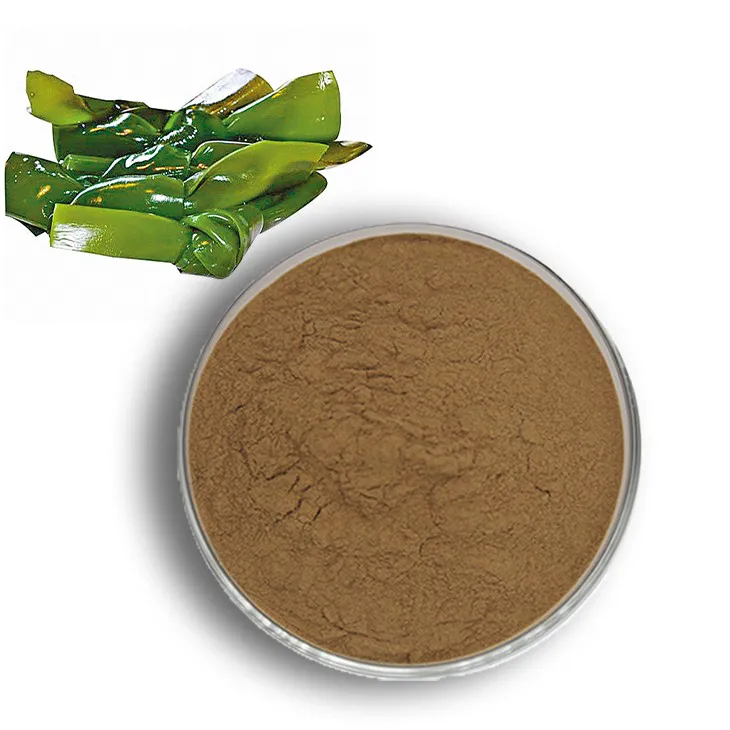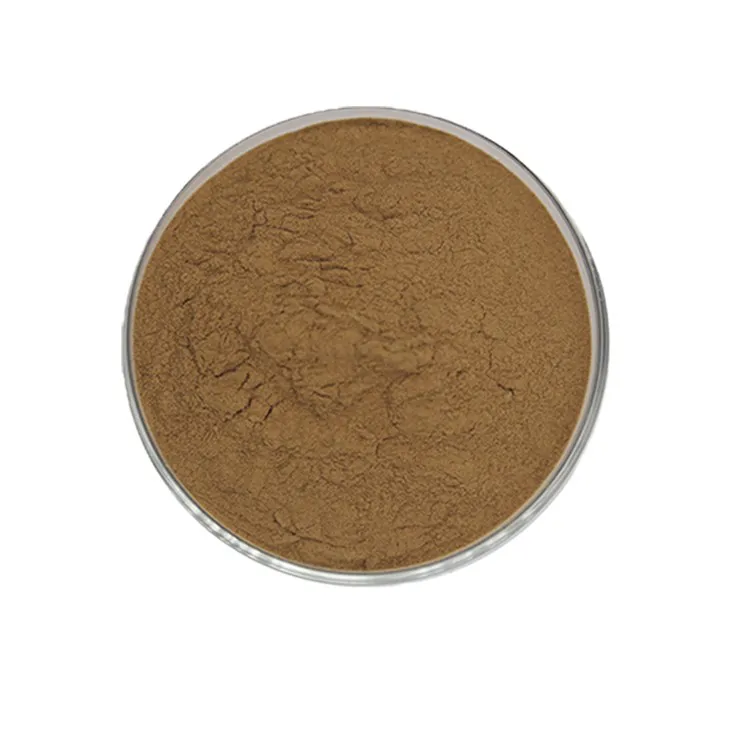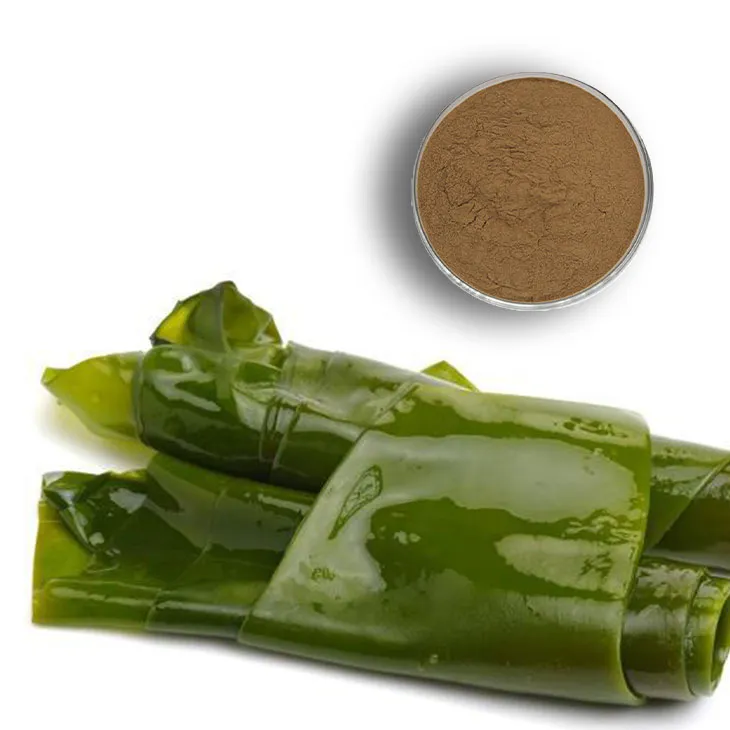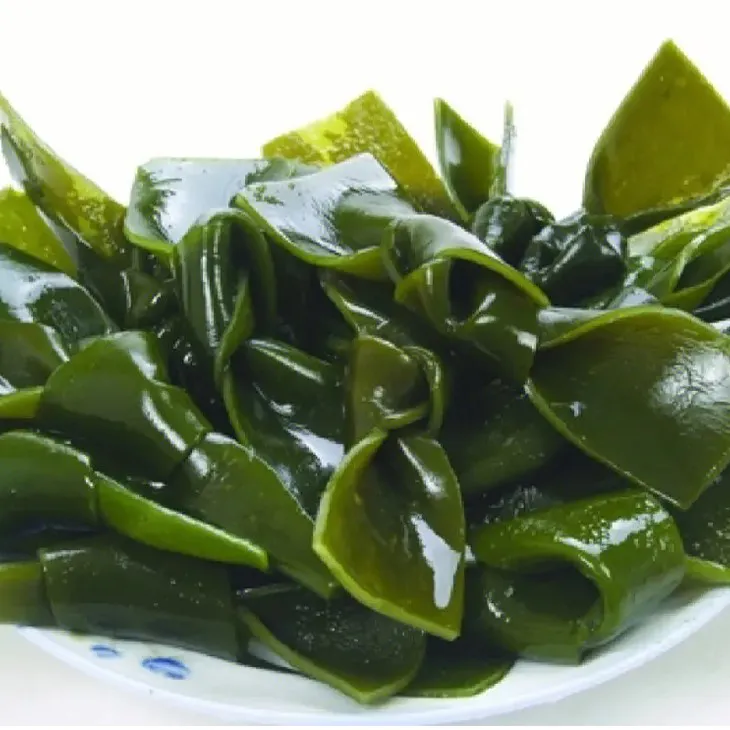- 0086-571-85302990
- sales@greenskybio.com
Extraction technology and production process of kelp extract powder.
2024-11-28

1. Introduction
Kelp Extract Powder has emerged as a significant product in recent years, with a wide range of potential applications. Its popularity is due to the numerous beneficial components it contains, such as polysaccharides, amino acids, and minerals. These components are believed to offer various health benefits and can also be used in agricultural products for promoting plant growth and resistance to diseases. Understanding the extraction technology and production process is crucial for ensuring high - quality Kelp Extract Powder production.

2. Kelp Collection and Preparation
2.1 Selection of Kelp
The first step in the extraction process is the proper collection of kelp. Different species of kelp may have different compositions and qualities. For example, Laminaria japonica is a commonly used species due to its relatively high content of useful substances. When selecting kelp, factors such as its origin, growth environment, and freshness need to be considered. Kelp from clean and unpolluted waters is preferred, as it is less likely to contain contaminants that could affect the quality of the extract.
2.2 Cleaning
Once the kelp is collected, it needs to be thoroughly cleaned. This involves removing any dirt, sand, and other impurities attached to the surface of the kelp. Cleaning can be done by rinsing the kelp in clean water multiple times. In some cases, gentle mechanical agitation may be used to ensure that all the dirt is removed. After cleaning, the kelp should be drained to remove excess water.
2.3 Drying
Drying is an important step in kelp preparation. There are different methods of drying, such as natural drying and artificial drying. Natural drying involves spreading the kelp out in a well - ventilated area and allowing it to dry under the sun. However, this method may be affected by weather conditions and may take a relatively long time. Artificial drying, on the other hand, can be carried out in drying ovens or using other drying equipment. The drying temperature and time need to be carefully controlled to ensure that the kelp is dried evenly without over - drying or under - drying. Over - drying may cause the loss of some active components, while under - drying may lead to mold growth during storage.
2.4 Grinding
After drying, the kelp is ground into a powder. This step is necessary to increase the surface area of the kelp, which will facilitate the subsequent extraction process. The grinding can be carried out using a grinder or mill. The particle size of the ground kelp powder should be uniform to ensure consistent extraction results. Generally, a finer powder is preferred as it can provide a larger contact area with the extraction solvent.
3. Extraction Technology
3.1 Traditional Extraction Methods
- Solvent extraction is one of the traditional methods. In this method, organic solvents such as ethanol or methanol are often used. The ground kelp powder is mixed with the solvent, and the mixture is then stirred for a certain period of time at a specific temperature. The active components in the kelp will dissolve in the solvent. However, this method has some drawbacks. For example, the use of organic solvents may pose safety risks and may also leave residues in the final product.
- Another traditional method is hot water extraction. Kelp powder is added to hot water, and the mixture is heated and stirred for a period of time. The water - soluble components in the kelp, such as polysaccharides, will be extracted into the water. Although this method is relatively simple and safe, it may have a lower extraction efficiency compared to some modern methods.
3.2 Modern Extraction Methods
- Ultrasonic - assisted extraction has become increasingly popular in recent years. In this method, ultrasonic waves are applied to the mixture of kelp powder and extraction solvent. The ultrasonic waves can create cavitation bubbles in the solvent, which will collapse and generate high - pressure and high - temperature micro - environments. These micro - environments can enhance the mass transfer between the kelp and the solvent, thereby increasing the extraction efficiency. Ultrasonic - assisted extraction can be carried out with different solvents, such as water or a combination of water and ethanol.
- Microwave - assisted extraction is another modern method. Microwave radiation is used to heat the mixture of kelp powder and solvent. The microwave energy can directly penetrate the material and cause the polar molecules in the solvent and kelp to rotate rapidly, generating heat. This rapid heating can improve the extraction efficiency by accelerating the dissolution of the active components in the kelp. Similar to ultrasonic - assisted extraction, microwave - assisted extraction can also be combined with different solvents.
- Enzyme - assisted extraction is also a promising method. Enzymes can be used to break down the cell walls of kelp, making it easier for the active components to be released. For example, cellulase and protease can be added to the kelp powder - solvent mixture. The enzymes will hydrolyze the cellulose and proteins in the kelp cell walls, respectively, allowing the extraction of the internal components more effectively. However, this method requires careful control of enzyme concentration, temperature, and reaction time to ensure optimal extraction results.

4. Filtration and Purification
4.1 Filtration
After the extraction process, the mixture needs to be filtered to separate the extract from the solid residues. Filtration can be carried out using various types of filters, such as filter papers, filter membranes, or filter presses. The choice of filter depends on the nature of the extract and the required filtration efficiency. For example, if a high - purity extract is desired, a filter membrane with a small pore size may be used. Filtration not only removes the solid residues but also helps to clarify the extract, making it more suitable for further processing.
4.2 Purification
In some cases, further purification of the extract may be necessary. This can be achieved through methods such as chromatography or precipitation. Chromatography can separate different components in the extract based on their different affinities for the stationary and mobile phases. For example, ion - exchange chromatography can be used to separate charged components in the kelp extract. Precipitation, on the other hand, involves adding a reagent to the extract to cause the precipitation of certain components. This can be used to remove impurities or to concentrate specific components in the extract.
5. Drying and Packaging
5.1 Drying
After filtration and purification, the kelp extract needs to be dried to obtain a powder form. The drying method used at this stage is similar to that in the kelp preparation step. However, more attention needs to be paid to the preservation of the active components. Vacuum drying or freeze - drying may be preferred in some cases as these methods can reduce the damage to the active components caused by heat. Vacuum drying removes water from the extract under reduced pressure, while freeze - drying freezes the extract first and then sublimates the ice directly to water vapor, leaving behind the dry powder.
5.2 Packaging
Once the Kelp Extract Powder is dried, it needs to be packaged properly to ensure its quality during storage and transportation. The packaging material should be moisture - proof, oxygen - proof, and light - proof to prevent the absorption of moisture, oxidation, and degradation caused by light exposure. Commonly used packaging materials include aluminum - foil bags, plastic bottles with desiccants, and laminated pouches. The packaging should also be labeled clearly with information such as the product name, composition, production date, and shelf - life.6. Quality Control
Quality control is an essential part of the production process of kelp extract powder.
- Raw material inspection is carried out at the beginning. The quality of the kelp used for extraction should be carefully checked, including its origin, freshness, and the presence of contaminants. Only high - quality kelp should be used in the production process.
- During the extraction process, parameter control is crucial. Parameters such as extraction temperature, time, solvent type, and concentration need to be monitored and controlled within the appropriate range. Deviation from the optimal parameters may affect the yield and quality of the extract.
- Final product testing is also necessary. The dried kelp extract powder should be tested for its composition, purity, and activity. Tests may include analysis of polysaccharide content, amino acid composition, and antioxidant activity. Only products that meet the quality standards can be released to the market.
7. Conclusion
The extraction technology and production process of kelp extract powder are complex but crucial for obtaining high - quality products. From the proper collection and preparation of kelp to the application of modern extraction methods, followed by filtration, purification, drying, and packaging, each step plays an important role. Quality control throughout the process is necessary to ensure that the kelp extract powder meets the requirements for various applications, whether in the field of health supplements or agricultural products. With the continuous development of technology, it is expected that the extraction technology and production process of kelp extract powder will be further optimized in the future, leading to higher - quality products and wider applications.
FAQ:
What are the main steps in the kelp collection for kelp extract powder production?
The main steps in kelp collection for kelp extract powder production typically involve selecting healthy kelp. This may include choosing kelp from clean waters to avoid contaminants. The kelp should be of appropriate maturity. After collection, it is often washed thoroughly to remove dirt, debris, and other impurities.
How does ultrasonic - assisted extraction work in obtaining kelp extract powder?
Ultrasonic - assisted extraction in obtaining kelp extract powder works by using ultrasonic waves. These waves create cavitation bubbles in the extraction solvent. When these bubbles collapse, they generate intense local heating, pressure, and shearing forces. This helps to break the cell walls of the kelp more effectively, allowing the desired compounds to be released into the solvent more efficiently compared to traditional extraction methods.
Why are filtration and drying important in the production process of kelp extract powder?
Filtration is important in the production process of kelp extract powder because it helps to remove solid particles, such as unextracted plant material or impurities that may have been introduced during the extraction process. This results in a purer extract. Drying is crucial as it removes the moisture from the extract, which not only helps in concentrating the active compounds but also in increasing the shelf - life of the kelp extract powder, preventing spoilage and microbial growth.
What factors can affect the yield of kelp extract powder during the extraction process?
Several factors can affect the yield of kelp extract powder during the extraction process. The type of extraction method used, such as ultrasonic - assisted extraction or other methods, plays a role. The solvent used for extraction also matters, as different solvents may have different extraction efficiencies for the various compounds in kelp. The ratio of kelp to solvent, extraction time, and temperature are also important factors that can influence the yield of the kelp extract powder.
How is the quality of kelp extract powder ensured in the production process?
The quality of kelp extract powder is ensured in the production process through several means. Firstly, starting with high - quality kelp in the collection and preparation stage is essential. Using proper extraction methods and controlling the extraction parameters, such as time, temperature, and solvent ratio, helps to obtain a consistent and high - quality extract. Filtration and drying processes should be carried out effectively to remove impurities and moisture. Quality control tests, such as assays for the active compounds and tests for contaminants, are also often performed throughout the production process.
Related literature
- Advances in Seaweed Extracts: From Production to Application"
- "Kelp - based Extracts: Novel Technologies for Extraction and Characterization"
- "Optimization of Kelp Extract Powder Production: A Review of Current Practices"
- ▶ Hesperidin
- ▶ citrus bioflavonoids
- ▶ plant extract
- ▶ lycopene
- ▶ Diosmin
- ▶ Grape seed extract
- ▶ Sea buckthorn Juice Powder
- ▶ Beetroot powder
- ▶ Hops Extract
- ▶ Artichoke Extract
- ▶ Reishi mushroom extract
- ▶ Astaxanthin
- ▶ Green Tea Extract
- ▶ Curcumin Extract
- ▶ Horse Chestnut Extract
- ▶ Other Problems
- ▶ Boswellia Serrata Extract
- ▶ Resveratrol Extract
- ▶ Marigold Extract
- ▶ Grape Leaf Extract
- ▶ blog3
- ▶ blog4
-
The best yohimbe bark extract on the market.
2024-11-28
-
Standard - process Mulberry Leaf Extract.
2024-11-28
-
100% Pure Natural White Willow Bark Extract.
2024-11-28
-
The Best Method for Extracting Vitamin D3.
2024-11-28
-
Chinese Lycopene Powder Factories.
2024-11-28
-
Apricot Powder
2024-11-28
-
Beetroot Powder
2024-11-28
-
Propolis Extract Powder
2024-11-28
-
Alisma Extract
2024-11-28
-
Curcumin Extract
2024-11-28
-
Rose Hip Extract
2024-11-28
-
Cat Claw Extract
2024-11-28
-
Hesperidin
2024-11-28
-
Curcuma Longa Extract
2024-11-28
-
Black Pepper Extract
2024-11-28





















